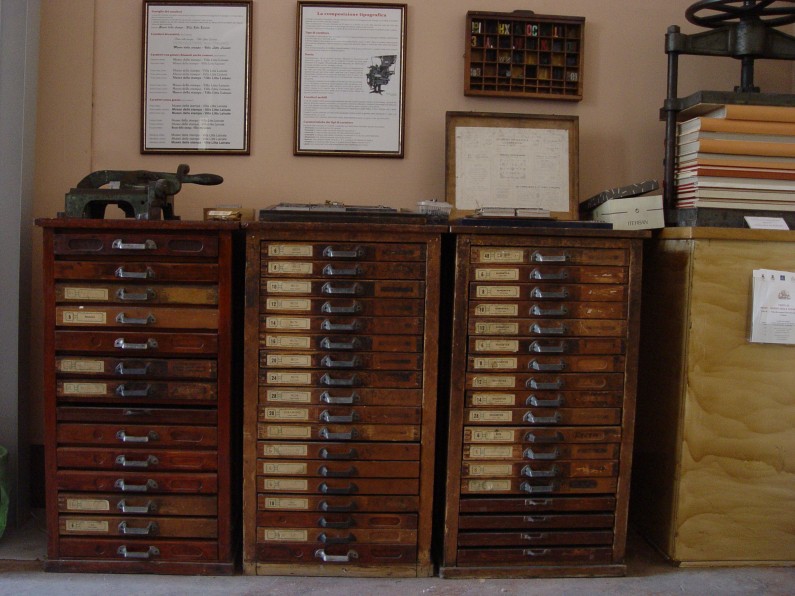
This permanent museum exhibition opened in December 2012 in the halls of Villa Visconti Borromeo Litta, and which collects materials and objects that have shaped the history of the printing press throughout the centuries, since the invention of movable characters.
More
This printing process was invented by the German, Johannes Gutenberg, in 1455 and consisted in aligning the individual characters (blocks with the heads bearing the letters of the alphabet represented in relief and in reverse order) to form a text, which was then sprinkled with ink and pressed on a sheet of paper or parchment to obtain the printed page. The innovation of this technique consisted in the possibility of being able to reuse the characters for more printed texts, which are different from each other, with the simple re-arrangement of the letters. Until then, the method most used was that of the printing wood, in which the matrix of the text was obtained through xylographs where the text matrix was etched on a single piece of wood, which therefore could be used to print always and only the same page. The first printed book was the so-called “Bible in 42 lines,” that is, with 42 lines per page divided into two columns.
The innovation was such that in just 50 years there were more than 30 titles printed with a circulation of more than 12 million copies across Europe. In Italy the printing press began to be used in 1465, at the monastery of Subiaco in Lazio, thanks to some printers from the German cities of Cologne and Mainz.
In the Museum there is an English made printing press of 1840 and different pedal and semi-automatic printing machines along with the tools necessary to perform a printer’s tasks. Among the various types are movable characters in lead, wood, plastic and a particular metal alloy composed of lead, tin and antimony. A room is then dedicated to photography relevant to printing, through the exhibition of antique cameras and tools for photographic prints. Aside from these objects, there is a collection of materials used in the composition and printing of the posters of The Scala Theater of Milan, a few books dedicated to the history of printing and numerous photographs of the many printing houses in the municipal area, whose donations make up much of the collection displayed in this museum.
The innovation was such that in just 50 years there were more than 30 titles printed with a circulation of more than 12 million copies across Europe. In Italy the printing press began to be used in 1465, at the monastery of Subiaco in Lazio, thanks to some printers from the German cities of Cologne and Mainz.
In the Museum there is an English made printing press of 1840 and different pedal and semi-automatic printing machines along with the tools necessary to perform a printer’s tasks. Among the various types are movable characters in lead, wood, plastic and a particular metal alloy composed of lead, tin and antimony. A room is then dedicated to photography relevant to printing, through the exhibition of antique cameras and tools for photographic prints. Aside from these objects, there is a collection of materials used in the composition and printing of the posters of The Scala Theater of Milan, a few books dedicated to the history of printing and numerous photographs of the many printing houses in the municipal area, whose donations make up much of the collection displayed in this museum.
